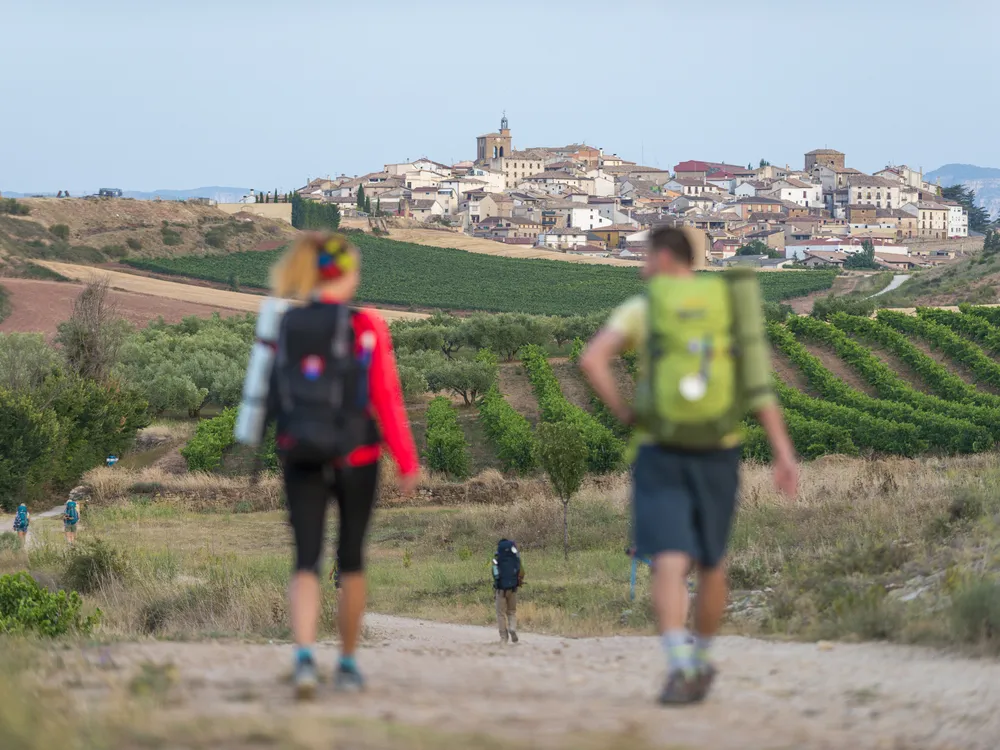Between 2019 and 2023, the number of walkers just on Spain and Portugal’s Camino de Santiago, a Christian pilgrimage leading to the purported tomb of St. James the Apostle, increased by nearly 100,000.
Alex Treadway/Getty Images
Fast-moving vehicles have transformed the way we explore the world. Zipping from one place to the next, leaving barely enough time to breathe let alone take in the culture of a new place—it was inevitable that travelers would revolt against the pace.
“Slow travel” is connected to the Slow Food movement, which evolved in direct response to the opening of a McDonald’s near Rome’s treasured Spanish Steps in 1986. The aim of founder Carlo Petrini and other activists was to fight against the homogenization of global culture through the defense and promotion of regional heritage, culinary traditions and a less frenetic pace of life.
Similarly, slow travel values sustainability and insight into local customs and culture over excessive consumption and instant gratification. The movement taps into an estimated 70 percent of travelers in search of experiences with less community and environmental impact, and a whopping 86 percent of millennials who cherish the concept of “living like a local.” Globally, slow tourism is expected to grow at a compound annual growth rate of 10 percent, and the larger sustainable travel movement of which it is a part is forecast to grow by $335.93 billion between 2022 and 2027.
Travel “is a bigger priority, and [people] are traveling more often,” explains Melissa Moses, European specialist at Goway Travel. “This puts less pressure on each trip to see everything. They can slow down for a more immersive experience. [Slow travel] is as much a mindset as it is a plan.”
Those who embrace the movement spend more time in a single country or region, seek out a wider range of cultural and ecological experiences unique to that place, and integrate wellness activities, like movement, mindfulness and spirituality, according to Moses.
As slow travel has surged, so too has the popularity of one form in particular: multiday lodge-to-lodge hikes. Between 2019 and 2023, the number of walkers just on Spain and Portugal’s Camino de Santiago, a Christian pilgrimage leading to the purported tomb of St. James the Apostle, increased by nearly 100,000. There…
Click Here to Read the Full Original Article at Travel | smithsonianmag.com…
